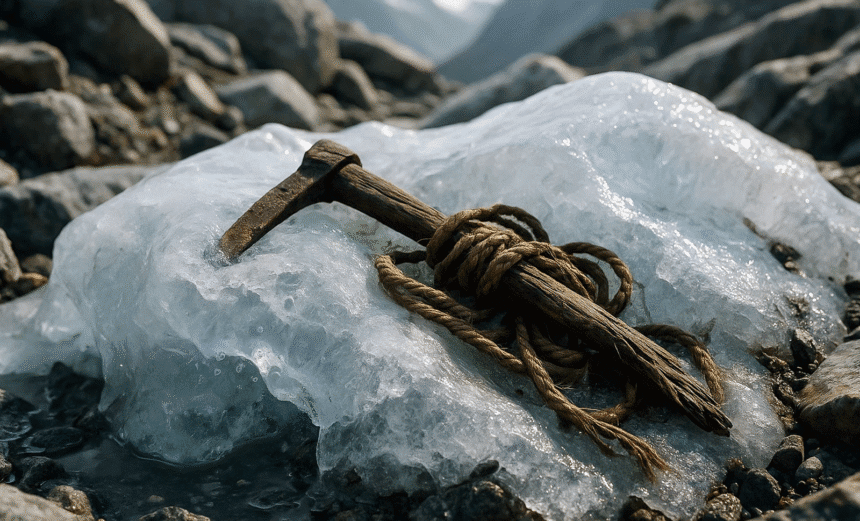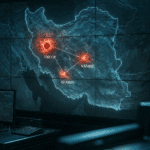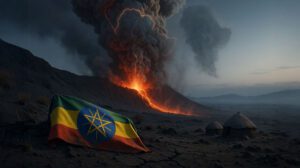As glaciers melt, rivers recede, and coastlines erode, an unexpected truth is surfacing. Climate change is not just a threat to the future of humanity; it is increasingly becoming a window into our past. Across the globe, long-buried archaeological sites are emerging from thawing permafrost, shrinking lakes, and scorched landscapes. In a dramatic paradox, the same forces of environmental degradation that endanger modern civilization are also exposing secrets once sealed by time. Yet as fast as history is revealed, it is also being destroyed by salt, heat, oxygen, and neglect.
From ancient tools in Mongolia to shipwrecks off the American coastline, climate change is radically reshaping archaeology. But this is not simply a tale of fascinating finds. It is an urgent story of cultural loss, preservation challenges, and the need to fundamentally rethink how humanity protects its historical legacy in an unstable climate.
Revelation Amidst Ruin: Climate Change Unearths the Past
Ironically, the forces accelerating heritage loss such as melting ice, droughts, erosion, and wildfires are also uncovering long-hidden sites. In Mongolia’s Tsengel Khairkhan mountains, retreating glaciers have revealed ancient hunting tools, animal remains, and rope fragments that offer rare insights into high-altitude life thousands of years ago, according to UNESCO. Similarly, Norway’s melting ice has exposed a pair of remarkably preserved skis from the 8th century, evidence of a vibrant prehistoric culture adapted to cold mountainous terrain.
In the United States, climate shifts have revealed dinosaur tracks in dried-up Texas riverbeds and long-lost settlements in wildfire-charred areas of Wyoming. Even shipwrecks and war-era debris in Nevada have surfaced as lake levels plummet. Each discovery deepens our understanding of human evolution, migration, and adaptation, but every artifact emerges into a highly unstable environment with little time for study or preservation.
When Discovery Is Destruction: The Shrinking Preservation Window
Though climate change is yielding new finds, the speed of environmental degradation means that these discoveries often begin to decay almost immediately. Wet conditions preserve organic materials such as wood, leather, and bone for centuries or even millennia. But once exposed to air, water, and microbial activity, such materials can rapidly deteriorate.
In the Arctic alone, more than 180,000 archaeological sites are under threat due to warming, according to UNESCO. Coastal and submerged heritage faces similar dangers. A 2024 study estimates that by the end of the century, nearly 5,000 historical sites along the Southeastern U.S. coast will be at risk from sea-level rise and hurricane-driven storm surges.
These environmental threats far outpace our capacity for intervention. Conservation teams often struggle with underfunding, political apathy, and the sheer logistical complexity of emergency preservation. Even when sites are known and accessible, documenting and saving them before they vanish is often not possible.
Cultural Icons Under Siege: Heritage at Risk Worldwide
The crisis does not only affect obscure or newly discovered sites. Globally recognized cultural landmarks are also deteriorating due to climate pressures. On Easter Island, rising temperatures, drought, and coastal erosion are destabilizing the iconic moai statues. These soft volcanic monoliths are increasingly crumbling, and local officials warn that “we won’t be able to protect them all”.
In Peru, the ancient city of Chan Chan is being affected by rising groundwater levels and frequent El Niño–linked floods that erode its fragile adobe walls. UNESCO and local governments are deploying sandbag barriers and architectural reinforcements, but the speed and intensity of the environmental changes make long-term protection difficult.
This global pattern, where even iconic and well-studied heritage is threatened, underscores the scale of the crisis.
Archaeology in Crisis: Policy and Preservation Challenges
The core challenge is systemic. Traditional archaeological methods and preservation models were never designed to operate under constant environmental threat. The dominant conservation principle, in situ preservation, is often no longer viable when the environment itself has become the threat.
Moreover, archaeology remains marginal in global climate negotiations, despite its clear relevance to adaptation science and community resilience. As UNESCO points out, preserving archaeological sites does not just protect history; it can also conserve ecosystems and mitigate carbon loss, particularly in wetland and peat-rich regions.
We also face a documentation dilemma. Many emerging finds will never be excavated or conserved in time. What is needed is a shift toward rapid-response methods: high-resolution drone surveys, AI-assisted satellite analysis, and mobile excavation teams capable of documenting ephemeral finds before they are lost.
Implications: Toward a Forward-Looking Heritage Strategy
Climate change is reshaping not only the physical world but also how we engage with the past. Archaeology must become faster, more interdisciplinary, and more proactive. Researchers, policymakers, and Indigenous communities must collaborate to identify, document, and protect cultural sites before they are lost.
Governments must also embed heritage preservation into national adaptation strategies. Funding needs to increase dramatically, and local communities should be empowered to lead in both documentation and stewardship. Heritage is not a luxury. It is a cornerstone of identity, memory, and resilience.
Ultimately, climate change is testing whether our connection to the past can withstand the forces of the present. The answer will depend not only on technology or policy but on the value societies place on history itself.
A Final Note
Climate change is not only transforming the world we live in but also rewriting how we uncover and protect the world we came from. As ancient artifacts emerge into unstable environments, the race to document and preserve them becomes more urgent than ever. The past is no longer buried, it is exposed and at risk, and how we respond will determine what future generations are able to remember, study, and learn from.

















